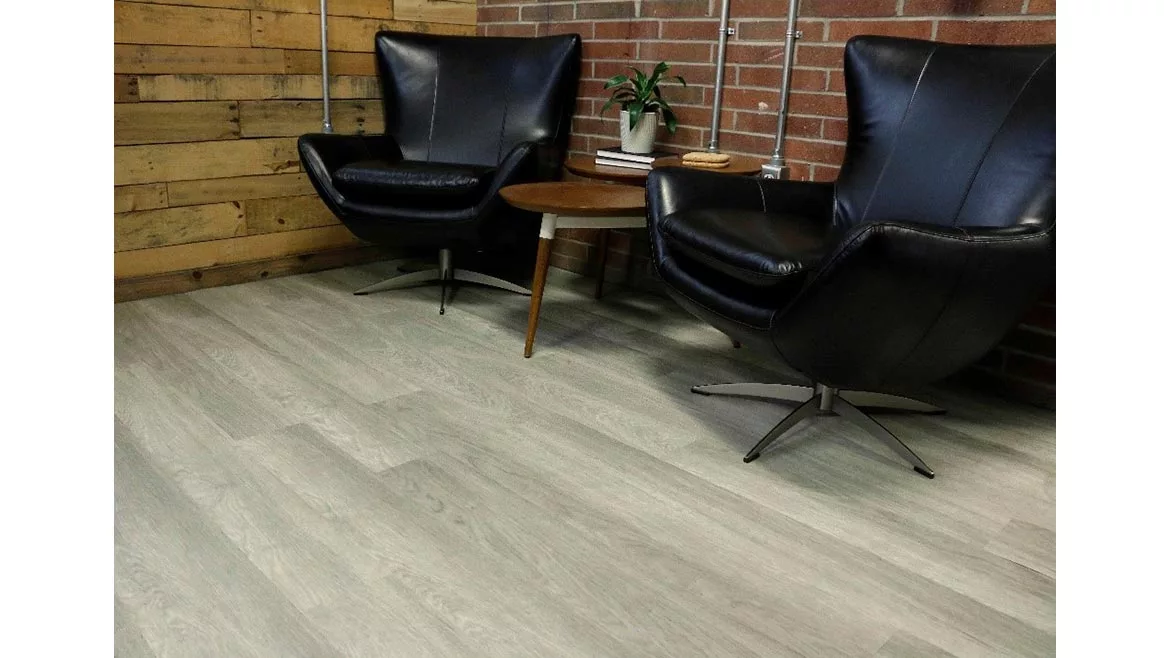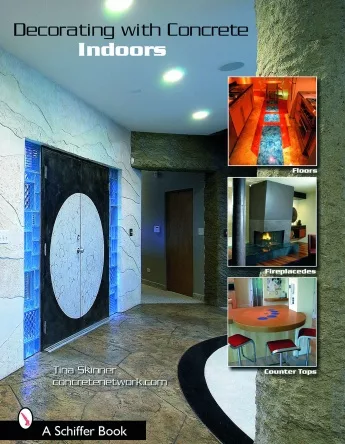Choosing the Right Flooring for Physical Therapy Practices

Heritage Motivate was designed to be safer, quieter and more ergonomic than traditional LVT products. Featuring a fiberglass reinforced 2mm vinyl surface layer bonded to a 5mm vulcanized composition rubber base layer, the 21mil wear layer provides commercial grade durability paired with the in-demand looks of realistic natural wood.
Photo: Ecore.
Be it yourself or a loved one, almost everyone has had some sort of experience with Physical Therapy (PT) during their life. It’s usually required as the result of an accident, injury, or chronic pain, and the person seeking therapy wants to become stronger or get better. Typical PT objectives include the ability to improve mobility, reduce or manage pain, restore function, and prevent disability or injury.
Physical Therapy Concerns
When PT is prescribed after an injury has been incurred or a surgery was performed, it’s because the body has been compromised to some extent. A compromised body is much more susceptible to environmental influencers, which are conditions that might create physical discomfort, fatigue, or affect balance.
In addition to a compromised body, another PT concern is patient confidence. If a patient does not have confidence in the PT process, the experience can have a negative impact on the patient experience and outcome.
A third PT concern that many people might not think about is the PT environment itself, which can also have a direct effect on patient outcome. A critical but often overlooked component in a PT environment is the healthcare flooring. PT activities occur on or above the floor often in direct contact with the patient. If the floor in a PT space is too hard or slippery, the person performing activities on it could have additional pain and/or a slip and fall risk which could lead to further injury.
Choosing the Right Floor for Physical Therapy
It’s important for PT providers to specify an ergonomic, patient-friendly flooring solution for their therapy center.
There are many PT floors on the market. Be sure to select one that support joints, reduces impact, and absorbs shock. In addition to these benefits, a floor that reduces sound to create a quieter healing space will help allow patients to focus on reaching their therapy goals. Enhanced acoustics will also support a patient’s right to privacy. With these benefits in mind, an engineered surface is ideal.
Ergonomic Flooring
An ergonomic floor is important, because it can effectively support and enhance the PT experience for the patient and the therapist. A crucial thing to consider here is the differences between an ergonomic floor and comfort flooring. An ergonomic floor strikes a balance between two measurable variables: force reduction and energy restitution. When these two dynamic forces approach balance, ergonomic performance improves.

Anti-Fatigue Flooring
An anti-fatigue floor, on the other hand, does not provide these benefits, although it can be marketed as providing an ergonomic solution. Furthermore, the phrase “anti-fatigue floor” is often confused with a soft, “comfort” floor. Examples of an anti-fatigue flooring are comfort mats, which are used in retail applications or in front of sinks in restaurants and home kitchens. Although the subjective feel of these floor mats may reflect comfort, they do not provide anti-fatigue properties. With these products, the body must work harder to maintain balance and must account for the lack of positive energy restitution from the floor. A similar correlation can be drawn if you think of a person running in sand. Although far less painful than running on concrete, running in sand is far more fatiguing. In conclusion if a surface is too soft, it poses very significant ergonomic issues.
Learn more about specialty flooring for healthcare and fitness environments
The connection between a patient and a physical therapist is critical to having a successful outcome. As a result, physical therapists should have optimal working conditions as well, and an ergonomic floor can contribute to the therapist's focus, stamina and attitude during the day. With extended hours and constant movement, therapists are using floors all day long that can either contribute to a productive workday, or create a distraction or even discomfort that, in turn, detracts from their care. Because the floor can either contribute to or inhibit a patient’s experience and outcomes as well as the well-being of the therapist, the floor does indeed matter.
Looking for a reprint of this article?
From high-res PDFs to custom plaques, order your copy today!



